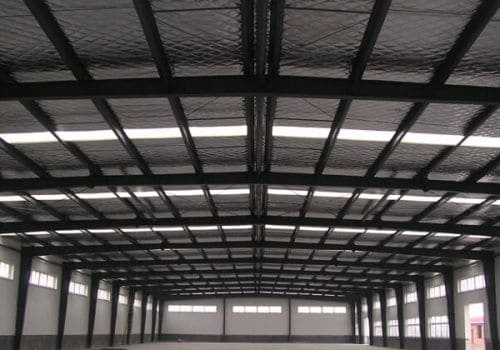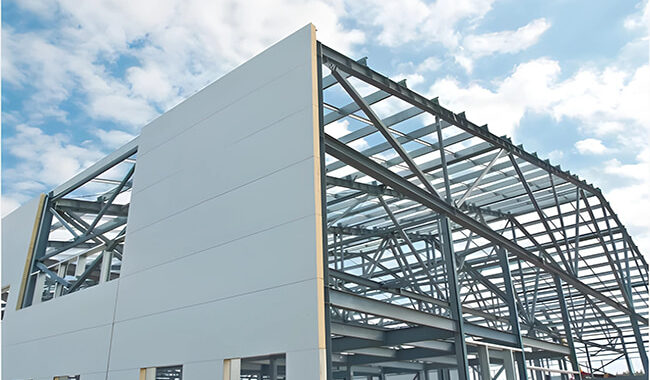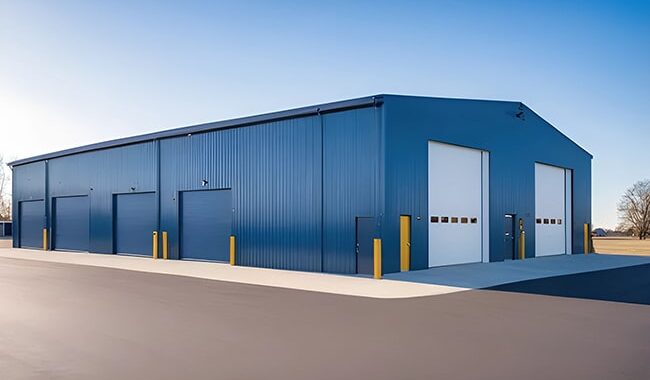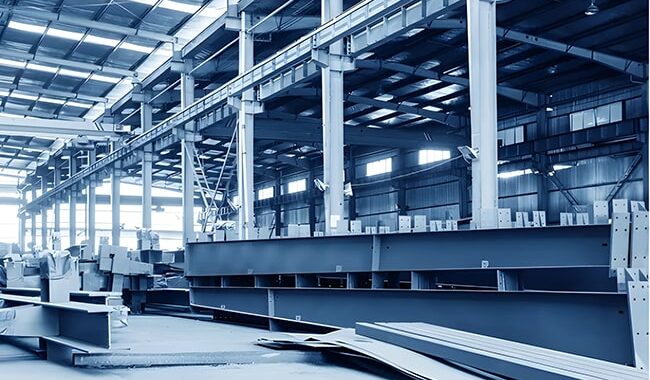If you’re searching for steel buildings for sale, you’ve probably already heard about this modern, alternative building structure. But what…
Structural steel fabrication is an essential part of steel structure construction. It is to process steel materials through cutting, bending, welding and other processes to make them components that meet the requirements of building design. There are many methods for structural steel fabrication. This article will introduce four main structural steel fabrication methods.
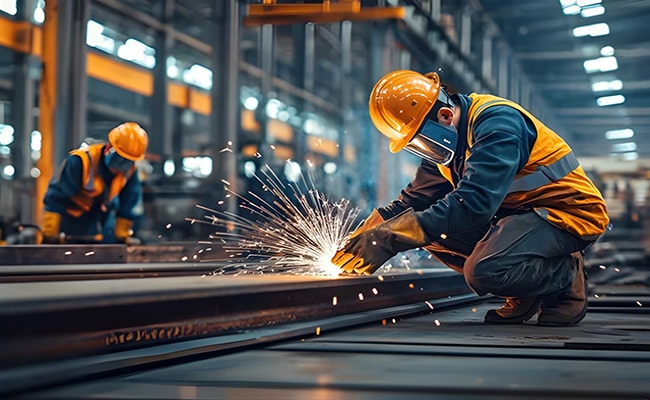
The Key Methods of Structural Steel Fabrication
Structural Steel Fabrication: Cutting
Cutting is one of the most commonly used methods in structural steel fabrication. It can cut large steel plates or materials into the required size and shape. The main cutting methods are flame, plasma, and laser.
Laser cutting: Laser cutting equipment can cut stainless steel below 4mm. Adding oxygen to the laser beam can cut 20mm thick carbon steel, but a thin oxide film will be formed on the cutting surface after oxygen cutting. The maximum thickness of the cutting can be increased to 20mm, but the dimensional error of the cut parts is large.
Plasma cutting: Plasma cutting is a steel structure processing method that uses the heat of a high-temperature plasma arc to partially or locally melt (and evaporate) the metal at the cut of the workpiece, and uses the momentum of high-speed plasma to remove the molten metal to form a cut.
Flame cutting: Flame cutting equipment is low-cost and an economical and effective means of cutting thick metal plates, but it has shortcomings in thin plate cutting. Compared with plasma, the heat-affected zone of flame cutting is much larger and the thermal deformation is relatively large. In order to cut accurately and effectively, the operator needs to have high technology to avoid the thermal deformation of the metal plate in time during the cutting process.
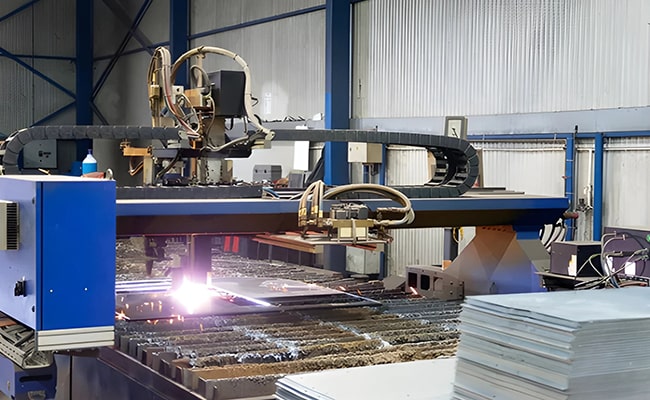
Structural Steel Fabrication: Hole Making
Hole-making uses hole-processing machinery or tools to process holes in solid materials (such as steel plates, steel sections, etc.). The fabrication methods of holes are complex and diverse. The processing of fastener holes is generally drilling, which is suitable for through holes for installing screws and some rivet installation holes.
Before drilling, select a suitable drill bit according to the type and size of the fastener to ensure that the hole size is within the allowable range. During the drilling process, first ensure the verticality of the hole, and secondly ensure the smoothness of the hole wall, otherwise it will affect the installation quality of the fastener. When making holes for relatively thick aluminum alloy materials that bear heavy loads, the inner surface of the hole must also be cold-worked and hardened. For smaller holes, a “drawing” process is used. For larger holes, the inner wall of the hole should be “shot-peened.” This can significantly improve the fatigue resistance of the hole.
There are usually two methods: drilling and punching.
Drilling: commonly used, the principle is cutting, high precision, and minor damage to the hole wall.
Punching: generally only used for processing thinner steel plates and non-circular holes, and the hole diameter is usually required to be not less than the thickness of the steel.
Drilling is preferred for making holes in steel structures. Punching is allowed when it is proven that certain material quality, thickness, and hole diameter will not cause brittleness after punching. Drilling is carried out on machines such as drilling machines, and steel structure components (parts) of any thickness can be drilled. The advantage of drilling is that the bolt-hole wall is less damaged and of better quality.
In structural steel fabrication, punching is generally only used to punch non-circular and thin plate holes. The hole diameter of the punching must be greater than the plate thickness. All ordinary steel structures with a thickness of less than 5 mm can be punched, and secondary structures with less than 12 mm can be punched. On the punched hole, subsequent welding (groove shape) shall not be performed unless it is proved that the material still retains considerable toughness after punching. Then, welding construction can be carried out. Generally, when the punched hole is expanded again, the punched hole must be 3mm smaller than the specified diameter.
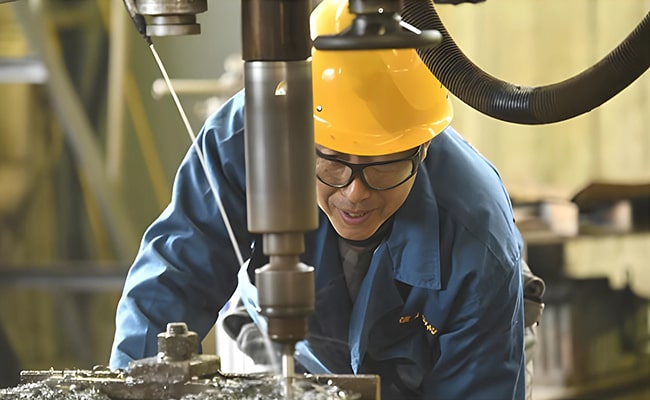
3. Stamping
Stamping is a structural steel fabrication method that punches, punches, bends, and other processes on steel to meet architectural design requirements. There are two main methods of stamping: mechanical stamping and hydraulic stamping. Mechanical stamping uses mechanical force to press steel into the required shape. Hydraulic stamping uses a hydraulic press to press steel into the required shape. Hydraulic stamping has fast speed, high hole accuracy, and high cost.
4. Welding
Welding is a method of connecting steel, one of the most essential processes in structural steel fabrication. The main welding methods are manual welding, submerged arc welding, gas shielded welding, etc.
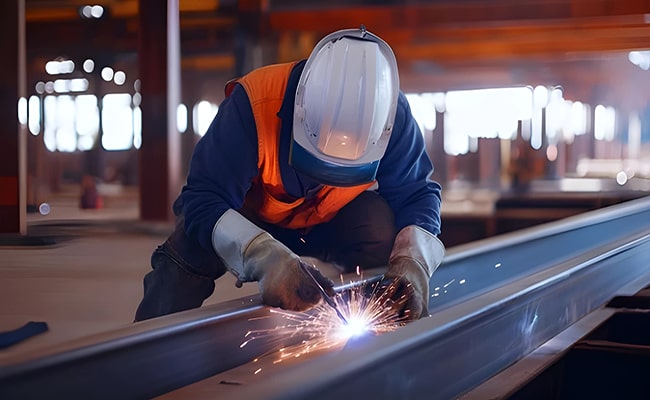
Manual arc welding
The method of welding relying on the heat of the arc is called arc welding.
Manual arc welding is a type of arc welding that uses manually operated welding rods for welding. It is a commonly used method in steel structure welding. The weldment and the welding rod are two electrodes, which generate an arc.
The arc generates a lot of heat, and the weldment and the melting welding rod, the end of the welding rod melts to form a molten droplet, which transitions to the molten parent material of the weldment to fuse, forming a molten pool and undergoing a series of complex physical-metallurgical reactions.
As the arc moves, the liquid molten pool gradually cools and crystallizes to form a weld. Under high temperatures, the coating cold applied to the steel core of the welding rod melts into slag, covering the surface of the molten pool metal. It can not only protect the high-temperature molten pool metal from chemically reacting with harmful oxygen and nitrogen in the air, but also participate in the chemical reaction of the molten pool and infiltrate alloys, etc., forming a protective slag shell on the surface of the cooled and solidified metal.
Automatic or semi-automatic submerged arc welding
Automatic submerged arc welding is superior to manual welding because the arc heat is concentrated, so the penetration depth is large, the weld quality is uniform, the internal defects are few, and the plasticity and impact toughness are good. The quality of semi-automatic submerged arc welding is between automatic submerged arc welding and manual welding. In addition, automatic or semi-automatic submerged arc welding has fast welding speed, high production efficiency, low cost, and good working conditions. However, their application is also limited by their own conditions. Since the welding machine must move along the guide rail along the weld, certain operating conditions are required.
Gas shielded welding
Also known as consumable gas arc welding, CO2 or inert gas is used to create a local protective layer around the arc to prevent the invasion of harmful gases and ensure the stability of the welding process. It can be welded in all positions, with good quality, fast melting speed, high efficiency, and power saving. There is no need to remove welding slag after welding, but it is worth noting that attention should be paid to avoiding wind during welding.
Conclusion:
In short, there are many methods for structural steel fabrication, and each method has its applicable occasions and advantages and disadvantages. In the process of structural steel fabrication, the appropriate processing method should be selected according to the specific situation to ensure the quality and precision of the steel structure. At the same time, attention should also be paid to safety and environmental protection issues in the processing process to contribute to the sustainable development of the construction industry.










